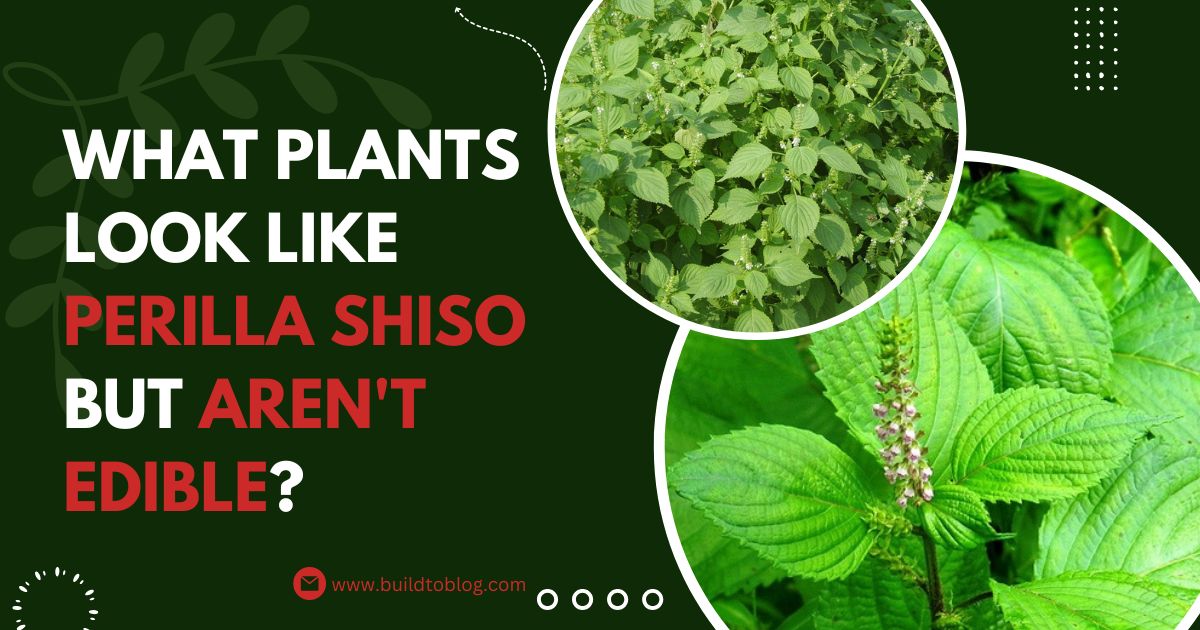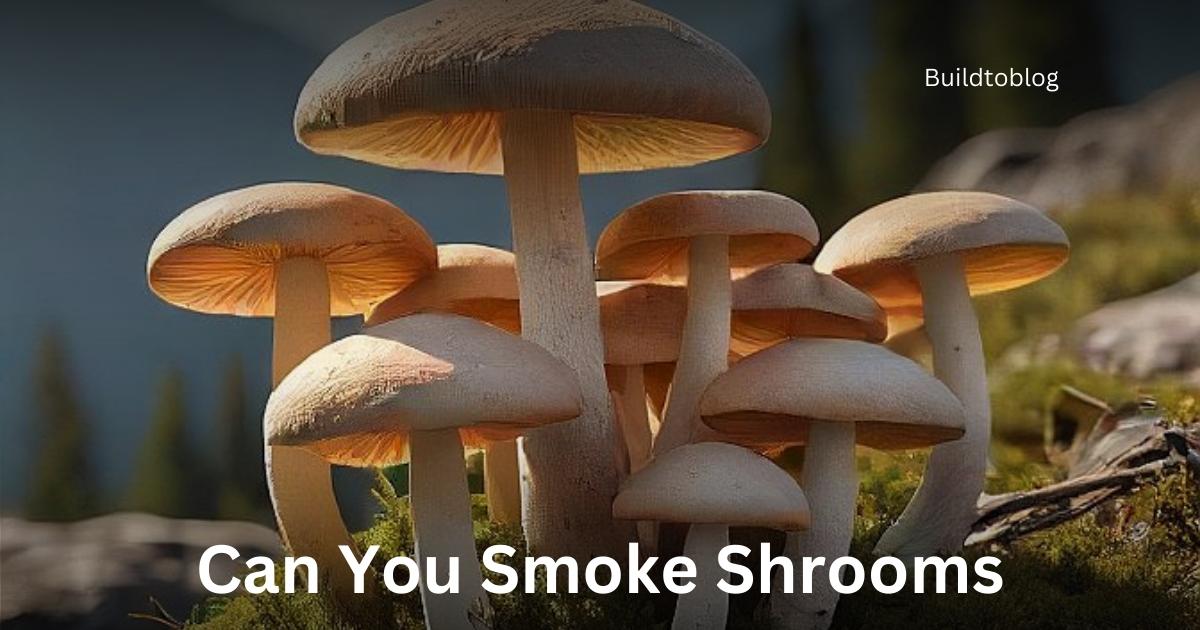Perilla, often called shiso, is a common herb in many Asian cooking styles, including those of Japan, Korea, and Vietnam. Everyone wants to cultivate it or hunt it down in the wild because of its unique appearance and flavor. Some plants, nevertheless, look a lot like perilla but are poisonous or otherwise unfit for human consumption. Along with important hints on identifying the real thing, this article will assist you identify plants that resemble perilla but are not safe to eat.
What is Perilla (Shiso) and Why is it Popular?
Shiso, or Perilla frutescens, is a herb that resembles mint or basil in flavor, has fragrant green or purple leaves, and a pleasant perfume. It is a member of the mint family and has both culinary and medicinal purposes, especially in East Asian cuisine. Perilla is a popular ingredient because of its distinctive flavor and because of the vitamins and antioxidants it contains. It is also prized for its possible health advantages, such as its ability to reduce inflammation and protect cells from damage.
How to Identify Perilla Shiso
In order to avoid any mistake, it is vital to know what real perilla looks like. The round, green or purple leaves of a perilla plant have slightly serrated edges. The bushy plant often reaches a height of one to three feet and has a strong, minty aroma. The leaves give out a scent that is unique among plants when they are touched.
Plants Commonly Confused with Perilla Shiso
Despite their striking resemblance to perilla shiso, some plants pose health risks and should not be eaten. Some of the most typical people who appear similar are:
Purple Dead Nettle
The purple-tinged tips of the leaves give purple dead nettle, a mint family member, a perilla-like appearance. But its leaves are fluffier, smaller, and spherical. Although purple dead nettle isn’t poisonous, most people don’t use it in cooking because it doesn’t have perilla’s signature flavor.
Coleus
Coleus plants are well-liked in the garden due to its colorful leaves, which may be found in a variety of tints of pink, purple, red, and green. Because of their form and colors, the leaves can resemble perilla. But coleus is mostly decorative and, if eaten, can upset the stomach. Because of its potentially harmful side effects, coleus should never be mistaken for edible plants.
Beefsteak Plant (False Perilla)
One of the plants that most closely resembles perilla shiso is the beefsteak plant, which is also called fake perilla. Although it looks and tastes very similar to perilla, this plant is typically not eaten due to its bitter flavor and purple leaves. If you eat some kinds of beefsteak plants, you can have some gastrointestinal issues since they contain chemicals that are slightly poisonous.
Henbit
The tiny, spherical leaves of henbit, which is a member of the mint family, have scalloped edges. It differs from perilla in terms of growth pattern and leaf form, yet sharing certain traits with perilla. Although henbit is not poisonous, its flavorless nature makes it an unused ingredient in most recipes.
Purple Basil
Some people mistake purple basil for purple perilla because of the similarity in growth habit and the rich purple color of the leaves. The aroma of perilla is very different from that of purple basil, which has a strong basil scent. You can eat purple basil, but it won’t be able to replicate the flavor of perilla.
Wild Violet
The heart-shaped leaves of wild violets resemble those of perillas at first look. To further complicate matters, the leaves of these plants frequently have a purple hue. If you’re looking for a perilla alternative, try wild violet leaves instead. They’re edible, but they don’t have the same flavor profile.
Wild Bergamot
The leaf form of wild bergamot, often known as bee balm, is comparable to that of other mint family members. But its leaves are thinner and longer. The lemony-mint scent of bee balm, when used in cooking, can be too much. Although it is not poisonous, perilla has a far superior taste.
Bugleweed
Carpet bugle, another name for bugleweed, is a plant with green or purple leaves that, up close, can look like perilla. As opposed to perilla, which grows tall and narrow, this plant sprawls out flat. Although it is not advised to consume, bugleweed is commonly utilized in landscaping.
Toxic Look-Alikes: Poisonous Plants that Resemble Perilla
There are a few of potentially harmful plants that look like perilla shiso, but the majority of them are harmless. When gardening or foraging, it is essential to identify these poisonous plants.
Jimson Weed
Ingesting Jimson weed, which is also called Datura, can have serious health consequences. This plant’s trumpet-shaped white or purple blooms give it away, even if its leaves look like perilla. Toxic chemicals found in all sections of the plant can cause serious poisoning if swallowed.
Foxglove
Foxglove is a kind of blooming plant that, at first look, looks a lot like perilla. On the other hand, its leaves are longer and thicker. Foxglove contains digitalis, a chemical that is very toxic and can be fatal if swallowed. You should never eat this plant in any way.
Poison Hemlock
The leaves of poison hemlock look similar to those of other plants. Its green leaves may trick foragers, despite the fact that they are structurally different. Any amount of poison hemlock, no matter how little, can be lethal if swallowed. Being careful while recognizing wild plants is essential for avoiding potentially harmful hybrids.
Distinguishing Characteristics: What Sets Perilla Shiso Apart
One way to tell perilla apart from similar plants is by its distinctive smell. A minty, basil-like aroma will be released as you rub the leaves. Unlike many plants that seem similar, this one grows in a bushy, upright fashion and has oval-shaped leaves that are slightly serrated and grow opposite each other on the stem.
Tips for Safely Identifying and Using Perilla Shiso
To avoid misunderstanding and enjoy perilla safely when foraging or cultivating herbs, consider the following:
Look for Aromatic Clues
True perilla leaves have a refreshingly minty scent.
Note the Leaf Texture
Unlike its rough or fuzzy imitations, shiso leaves are smooth.
Check the Growth Pattern
Perilla grows tall and proud, in contrast to the prostitutes.
Observe the Leaf Shape
The serrated edges of shiso leaves set it apart from other plants of a similar hue.
Use a Guidebook
To keep yourself safe while foraging, bring along a plant identification guide.
The Risks of Consuming Misidentified Plants
It is dangerous to eat plants that are not properly identified. When confused with edible kinds, certain non-toxic plants can cause gastrointestinal problems, while others are quite dangerous. Do not ingest any plant, no matter how similar it seems to perilla, unless you have confirmed its authenticity.
Conclusion
Although perilla shiso is a tasty and adaptable plant, there are several confusing and even dangerous lookalikes. Many plants look identical but are really rather dangerous to eat, such as poison hemlock and decorative coleus. You may enjoy perilla without worrying about ingesting hazardous imposters if you know how to identify it from its look-alikes.
FAQs
Can I grow perilla shiso at home to avoid confusion with wild plants?
Yes, growing perilla at home is a great way to enjoy it safely. It minimizes the risk of misidentifying wild plants.
Is purple basil a safe substitute for perilla in recipes?
Yes, purple basil is safe and edible, though it has a different taste than perilla shiso.
How can I distinguish perilla from beefsteak plants?
Beefsteak plants are often bitter and lack perilla’s characteristic aroma. They also may have a different leaf texture.
Are all plants in the mint family edible?
No, not all mint family plants are edible. Some, like bugleweed, are non-toxic but not suitable for culinary use.
What should I do if I suspect I’ve consumed a toxic plant?
Seek medical attention immediately. Symptoms may vary but often include nausea, dizziness, or more severe reactions.





